| Srl | Item |
| 1 |
ID:
110852
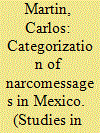

|
|
|
|
|
| Publication |
2012.
|
| Summary/Abstract |
The current article brings together the conclusions of an exercise carried out in an attempt to analyze and classify narcopropaganda, or "narcomessages" in Mexico. The analysis and classification of narcomessages is able to provide some insights about the motivations underlying the increase of violent attacks in the country; at the same time, the classification of these messages can help in the identification of those groups that are more likely to influence public perception and support public policy measures against them.
|
|
|
|
|
|
|
|
|
|
|
|
|
|
|
|
| 2 |
ID:
153691
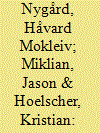

|
|
|
|
|
| Summary/Abstract |
What factors explain attacks on humanitarian aid workers? Most research has tended to describe trends rather than analyse the underlying reasons behind attacks. To move this agenda forward, we present to our knowledge the first peer-reviewed cross-national time-series study that identifies factors related to violent attacks on humanitarian aid workers. Our theoretical framework explores two sets of potential explanatory factors: dynamics of conflicts; and the politicization and militarization of humanitarian operations. Using a global sample at the country level from 1997 to 2014, our results suggest that: (i) the presence and severity of armed conflicts are related to increased attacks on aid workers; (ii) aid workers do not appear to face greater risks even where civilians are targeted; (iii) the presence of an international military force does not appear to add to nor decrease risks to aid workers; and (iv) the effects of peacekeeping operations upon humanitarian security are varied. We discuss this in light of the ongoing challenges facing humanitarian organizations to provide security in fragile and conflict-affected areas.
|
|
|
|
|
|
|
|
|
|
|
|
|
|
|
|
| 3 |
ID:
107646
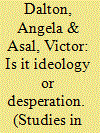

|
|
|
|
|
| Publication |
2011.
|
| Summary/Abstract |
Why do some terrorist organizations deploy women on the front lines and in violent attacks? This study explores the social conditions, economic factors, and organizational characteristics that might explain women's participation in violent terrorist activity. With a new data set of 395 terrorist organizations, women's participation in terrorist attacks was quantified and coded. The logistic regression analysis results suggest that women's educational attainment, social rights, terrorist organization's age and size, and the level of a country's economic development are important predictors of the deployment of women in terrorist violence while a terrorist group's ideological or religious orientation and the level of democracy do not significantly influence the likelihood of women's participation.
|
|
|
|
|
|
|
|
|
|
|
|
|
|
|
|
| 4 |
ID:
131760
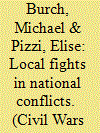

|
|
|
|
|
| Publication |
2014.
|
| Summary/Abstract |
How do rebel groups determine their targets during intrastate conflict? We build upon two competing theories in conflict studies that emphasize either the social or economic determinants of violence during war and use geographic information systems (GIS) analysis to explore these competing theories. To do this, we utilize a subnational analysis of the most likely case of the Democratic Republic of the Congo to understand whether ethnicity or natural resources motivates the location of conflict events. Accounting for geography, we find that economic endowments in the form of natural resources are highly related with the number of violent attacks, while the presence of competing ethnic groups does not offer much help in understanding the location of conflict events.
|
|
|
|
|
|
|
|
|
|
|
|
|
|
|
|
| 5 |
ID:
129234
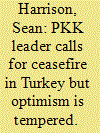

|
|
|